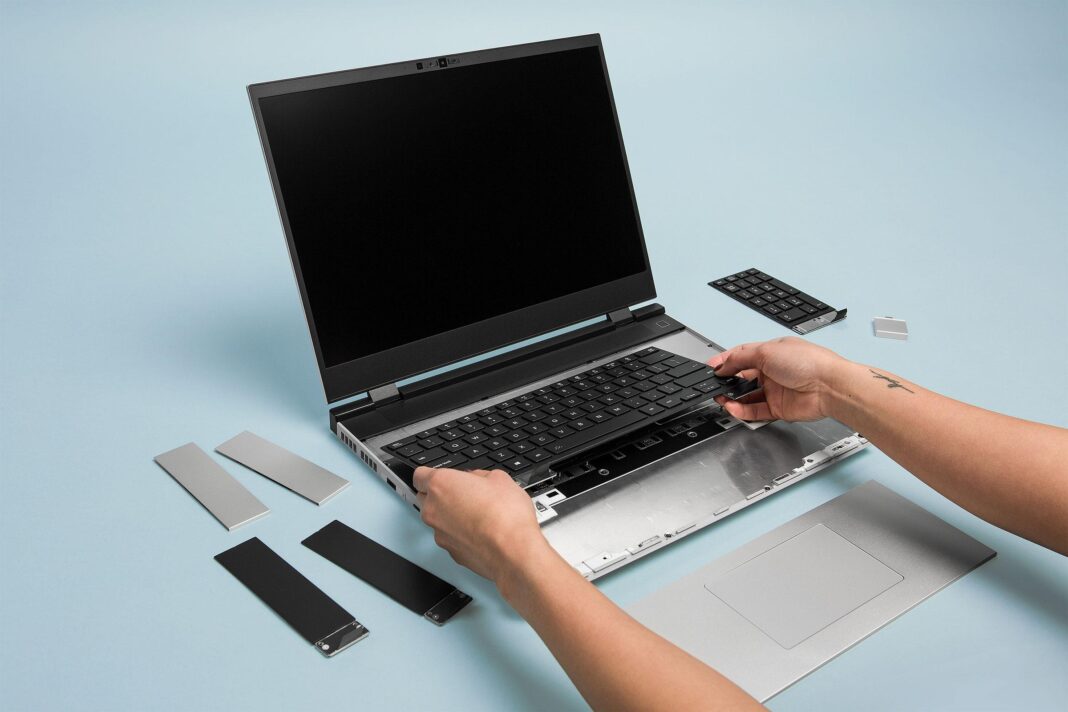Framework Laptop Review: Modular Computing or techie Fantasy?
In a world where technology is often synonymous with obsolescence, the Framework Laptop emerges as a beacon of hope for eco-conscious consumers and tech enthusiasts alike. With its promises of modular design and effortless upgradability,this innovative device challenges the status quo by inviting users to participate in a vision of computing that prioritizes longevity and sustainability. As we delve into the intricacies of the Framework Laptop, we’ll explore whether this bold endeavor truly represents a tangible shift towards modular computing or if it remains a fleeting dream within the tech community. Join us as we strip away the layers, examining the performance, design, and practicality of this pioneering machine in a landscape increasingly dominated by throwaway culture.
Exploring the Modular Design of the Framework Laptop
the Framework Laptop’s modular design is a meaningful departure from traditional laptops, paving the way for a future where users have the freedom to customize, upgrade, and repair their devices. This innovative approach allows for various components to be easily swapped out, making it not just a device, but a living ecosystem tailored to the user’s needs. Key features of this modular design include:
- Interchangeable Parts: Memory, storage, and even the CPU can be upgraded without needing specialized tools.
- User-Friendly Layout: Each component is conveniently housed behind an easy-to-remove panel.
- Sustainable Approach: Reduces electronic waste by allowing users to replace only the parts they need, rather than the entire device.
This modularity extends beyond mere hardware. The Framework Laptop comes with a range of expansion cards that plug into the laptop’s mainboard, enabling users to choose the ports and functionalities they prioritize. Whether a user needs extra USB ports, HDMI output, or SD card readers, the flexibility of these expansion cards means that each individual can craft their ideal setup. The following table highlights some of the most popular expansion card options available:
| Expansion Card Type | Features |
|---|---|
| USB-A | 2x USB 3.2 Gen 1 ports for fast data transfer |
| HDMI | Full-size HDMI for display connectivity |
| microSD | Convenient for photographers and content creators |
| Ethernet | Reliable wired internet connection option |

Performance Analysis: Bridging Power and Flexibility
The Framework Laptop embodies the concept of modular computing, effortlessly marrying performance with flexibility. With its robust specifications, it can handle demanding tasks, from graphic design to software growth, while also making room for custom upgrades that cater to individual needs. Users can easily swap out components like RAM or storage, diminishing the typical lifecycle limitations of traditional laptops. Consequently, the longevity and adaptability of this device are not just appealing; they redefine how we view technological investment in our digital age.
Moreover,the true genius of the Framework Laptop reverberates through its performance metrics. Loading applications and multitasking are seamless experiences, allowing users to run resource-intensive software without any noticeable lag. A breakdown of its performance highlights the balance it strikes between power and adaptability, with key specifications enumerated below:
| Component | Specification |
|---|---|
| Processor | Intel Core i7 (11th Gen) |
| RAM | Up to 64GB DDR4 |
| Storage | Up to 4TB NVMe SSD |
| Graphics | Intel Iris Xe |
| Battery life | Up to 10 hours |

Sustainability in Tech: The Environmental Impact of Modular Computing
the environmental implications of our computing choices are becoming increasingly significant as technology continues to evolve. Modular computing, exemplified by products like the Framework Laptop, positions itself as a sustainable option to traditional tech manufacturing. By focusing on repairability and upgradability, modular systems can dramatically extend the lifecycle of devices, thereby reducing electronic waste. This forward-thinking approach encourages users to think critically about their technology, often resulting in less frequent device replacements and a lesser carbon footprint associated with production and disposal.
In a world where electronic waste is a growing crisis, the benefits of a modular framework can be illustrated through its core tenets:
- Reduced E-Waste: Each component can be individually replaced, minimizing the likelihood of discarding entire laptops.
- Energy Efficiency: Upgrading specific parts often requires less energy compared to manufacturing a new device from scratch.
- Consumer Empowerment: users can customize their devices, making choices that reflect both personal needs and environmental responsibility.
To showcase the potential positive impact on sustainability, here is a simplified comparison of electronic waste generated by traditional vs. modular systems:
| system Type | Average E-Waste (kg/year) | Lifecycle Duration (years) |
|---|---|---|
| Traditional Computing | 10 kg | 2-3 years |
| Modular Computing | 3 kg | 5-8 years |

User Experience: Is Modular Design Practical for Everyday Use?
The shift towards modular design in technology has sparked debates on its practicality in everyday use. For some, the notion of interchangeable components is a dream come true, allowing users to easily upgrade or replace parts without needing to purchase an entirely new device. Benefits of modular design include:
- Customization: Users can tailor their devices according to personal preferences and needs.
- Sustainability: By reducing electronic waste, modular systems promote a greener approach to technology.
- Cost-effectiveness: Replacing individual components can be more budget-friendly than buying a new device.
However, the practical implementation of such systems often falters in real-world scenarios. Many consumers prioritize convenience and seem hesitant to navigate the complexities that come with modularity. The challenges faced include:
- Learning curve: Users may find the process of swapping parts intimidating or confusing.
- Compatibility issues: Not all components may work seamlessly together, leading to performance problems.
- Availability of parts: The market for specialized modular parts can be limited, restricting upgrades and repairs.
| Advantages | Disadvantages |
|---|---|
| Customization options | Complex assembly process |
| Eco-friendly | Parts compatibility issues |
| Lower long-term costs | Limited parts availability |
To Wrap It up
As we draw the curtain on our exploration of the Framework Laptop, it’s clear that this innovative device occupies a unique space in the landscape of personal computing. With its modular approach, it offers users the tantalizing promise of longevity and customization, shaking off the shackles of planned obsolescence that have long plagued consumers.
yet, while the aspirations of modular computing paint a vision of a more sustainable and user-centric future, the practicality of such a system raises its own set of questions. Are we ready to embrace a techie dream, or does the allure of limitless upgrades mask the complexities of implementation?
the Framework Laptop serves as both a beacon of technological possibility and a reminder of the choices we face in an ever-evolving digital world. As consumers, we must decide whether this is a mere fantasy or a harbinger of the future we wish to build. Whatever path we choose, one thing is certain: the conversation around modular computing is just beginning, and it will undoubtedly shape the way we interact with technology for years to come.




